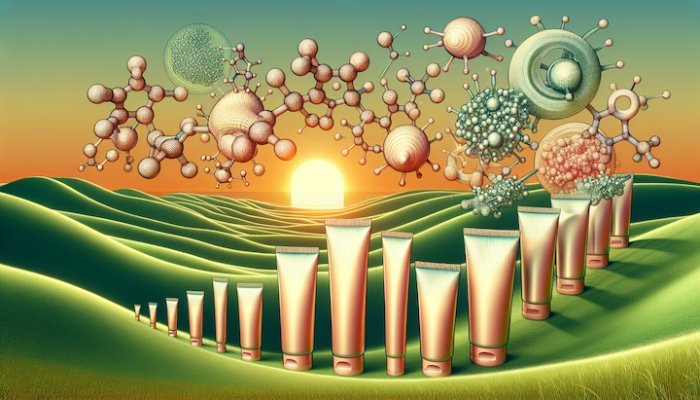Does progesterone cause cancer?
Many, including state authorities, make the mistake that progesterone and the synthetic progestins are one and the same.
They are not.
Therein lies the root of the misinformation that natural progesterone poses a cancer threat.
Emory University has been studying progesterone for over 20 years now and have only found benefits. In fact a study completed in 2006 on Traumatic Brain Injury, found it remarkable at reversing the oedema that formed after the injury, with no adverse side affects. Interestingly 71% of the victims were men.
THE PROMISE from nark angel on Vimeo.
"The truth about the harms of the routine breast cancer screening program. The biggest catastrophe in women’s health is taking place right now right before our eyes. Healthy women all over the world have been disfigured, disempowered and brainwashed into believing that their beautiful nurturing breasts have only one objective... to kill them."
Presenter Carole Malone
Directed by Hambi
Produced by Phil Hughes
Several studies show how progesterone actually protects against cancer by activating the gene p53, which is the gene involved in apoptosis. If this gene is inactive cells keep growing.
The hormone oestrogen is a known initiator of heart disease and cancer, progesterone inhibits the production of oestrogen.
There are many, many research papers showing the protective role progesterone plays in the body. It protects against hypertension, lowers blood fats, it prevents coronary hyperactivity, a sign of coronary artery disease, it does not increase breast, endometrial and ovarian cancer risk and can be protective against it, can prevent epilepsy, it improves vasomotor symptoms, it prevents miscarriages and many more.
Cancer of hormonally sensitive tissue
There is increasing evidence that 95% of cancers are caused by environmental factors such as pollutants from agriculture and industry, processed food and the misuse of prescription drugs such as oestrogen, whereas only 5% are related to our genes.
Numerous studies show we can alter the way our genes are expressed by changing the factors that influence them, such as those stated above. Continuing research, first started during the 90's, has identified a few genes that help control cell growth by producing substances that regulate cell division. If these genes are damaged by pollutants, by oxidation or by a lack of certain nutrients, the cells multiply rapidly and cancer can be the result.
Homocysteine (H) has been identified as a reliable marker for low levels of certain B vitamins and is indicative of a possible risk for getting over fifty common diseases, amongst them being cancer. There is now evidence that having a high H score adversely affects the rate of tumour growth.
A study reported in Cancer in 2002 found an increase in cancers due to a lack of UV-B and vitamin D3. The researchers believe that mortality rates could be reduced by careful exposure to sunlight and taking vitamin D3 supplements. Progesterone and Vitamin D have remarkably similar properties, and studies on TBI have found a lack of vitamin D reduces the benefits of progesterone.
It has now been recognised that if a mother has been exposed to high levels of natural or xeno-oestrogens whilst pregnant, the foetus could be affected, leading to breast, ovarian and endometrial cancer in women and testicular, prostate and increasingly breast cancer in men.
Research has shown that the longer a women is exposed to her own natural oestrogen, i.e. a long reproductive lifetime, the greater the chances of her getting cancer. Women with low levels of progesterone have a 5.4 greater chance of getting breast cancer with 10 times a greater chance of dying from all cancers. Breast cancer recurrence after a mastectomy is more likely if the surgery is performed in the first half of the cycle when oestrogen is dominant than in the second half.
Contraceptives increase the risk of getting cervical cancer, the longer the duration of taking it, the greater the risk.
HRT (hormone replacement therapy), unopposed by progesterone, causes endometrial cancer. 2 studies published in 1995 found that women who had been exposed to HRT for longer than 5 years had a 32% increased risk of getting breast cancer, if combined with a progestin it went up to 41% and for those women who were post menopausal the risk went up to 71%, while the risk of getting ovarian cancer went up by 72%.
The latest evidence of oestrogen and progestin causing problems in women comes from the Women's Health Initiative, which ended in 2003, three years early due to an increase in breast cancer, heart disease and strokes. The FDA has now ordered pharmaceutical firms to include a warning label on HRT boxes stating the increase. By 2004 the latest oestrogen only arm of the WHI was halted due to an increase in the incidents of stroke.
Tamoxifen, a weak oestrogenic drug used in the treatment of breast cancer, is classified as a carcinogen. It causes an increase in both endometrial and liver cancer.
As water is now contaminated with oestrogen from HRT and The Pill, plus those generated by industry, men are increasingly subject to an excess, and with this comes an increase in the oestrogen related cancers, prostate and testicular. If treated with oestrogen for prostate cancer or after transsexual surgery there is an increased risk of men getting breast cancer. The older a man gets the more likely he is to suffer from Oestrogen Dominance, which causes a decrease in his testosterone levels and an increase in di-hydrotestosterone, this in turn leads to a drop in libido and an increased likelihood of getting prostate hyperplasia or cancer.
There are at least 40 if not more carcinogens to which we are exposed on a daily basis. Of main concern are: alcohol; artificial sweeteners; bleaches used for whitening flour etc; charred food e.g. toast and browned meat; chlorine in drinking water; fluoride; food preservatives; all mineral oil, inc liquid paraffin; oestrogen and other endocrine disruptors; skin care products, in particular sunscreens; pesticides; industrial chemicals such as dioxin, PCB's and phthalates; plastics; radiation from the sun, nuclear power stations, TV sets, computers and cell phones; refined cooking oil and margarine; tobacco smoke; vehicle exhaust fumes; x-rays.
Additional information
Progesterone
Women should use between 100-200mg of progesterone daily. Men should use between 10-100mg/day. More might be needed, vary the amount used following symptoms as a guide. If radiation therapy is called for put the cream directly on the burn, as it has soothing, pain reducing and regenerative properties. Progesterone is neuroprotective, it prevents lipid peroxidation and confers vascular protection. As an anti-inflammatory agent, progesterone has been shown to reduce the response of natural killer cells as well as other known initiators of inflammation.
Cancer is a mentally stressful disease, stress in turn causes a rise in cortisol and adrenaline. This leads to further anxiety. Adrenaline prevents cancer cells from dying, it is also an excitatory hormone. Progesterone counters the rise in adrenaline by activating the GABA receptor sites. GABA is the major calming neurotransmitter in the brain.
Nutrition
Please see the page on Nutrition for more information about food and diet.
 Struggling with weight gain or not being able to shed excess mass? If you have addressed your diet and exercise regime then you may want to look into the role hormones play in the arena of weight mana…
Struggling with weight gain or not being able to shed excess mass? If you have addressed your diet and exercise regime then you may want to look into the role hormones play in the arena of weight mana… Finding natural solutions to hormonal problems is a quest for many women worldwide. Organic progesterone creams emerge as a favoured choice offering a natural balance without the complications attache…
Finding natural solutions to hormonal problems is a quest for many women worldwide. Organic progesterone creams emerge as a favoured choice offering a natural balance without the complications attache… Navigating perimenopause, a period when progesterone becomes crucial for a woman’s well-being, can be quite challenging as one grapples with an array of symptoms. From the age of around 35, the produc…
Navigating perimenopause, a period when progesterone becomes crucial for a woman’s well-being, can be quite challenging as one grapples with an array of symptoms. From the age of around 35, the produc…